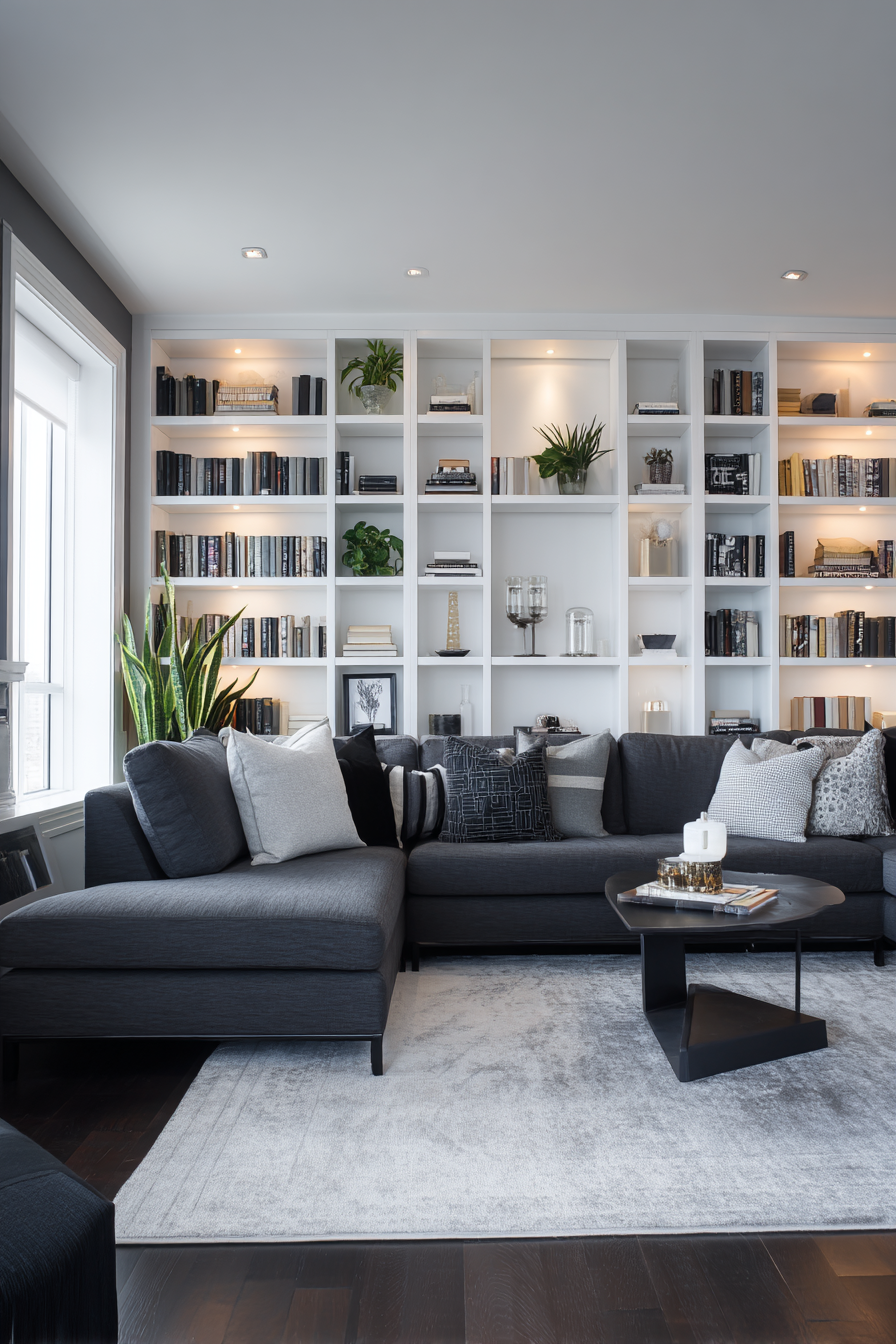I’ve always believed that a single wall can completely transform a living room. After years of designing spaces and helping homeowners create their dream rooms, I’ve discovered that accent walls are one of the most powerful yet underutilized design tools available. They’re like adding a piece of jewelry to an outfit—instantly elevating the entire look.
An accent wall serves as your room’s focal point, drawing the eye and creating visual interest without overwhelming the space. Unlike full room makeovers that can drain your budget and time, accent walls offer maximum impact with minimal investment. Whether you’re working with a small apartment or a spacious family room, the right accent wall can make your space feel larger, cozier, or more sophisticated.
What makes accent walls particularly exciting is their versatility. From bold paint colors that make a statement to textured materials that add depth, the possibilities are endless. You can showcase your personality, highlight architectural features, or create the perfect backdrop for your favorite furniture pieces.
In this guide, I’ll walk you through 12 stunning accent wall ideas that have transformed countless living rooms. Each approach offers something different—some focus on natural materials for warmth, others embrace modern technology for convenience, and several combine multiple elements for truly unique results. You’ll discover practical tips for implementation, learn about color palettes that work, and understand which materials deliver the best results for your specific space and lifestyle.
These aren’t just design trends that will fade next season. These are timeless approaches that adapt to your evolving style while adding lasting value to your home.
1. Natural Stone Accent Walls
Create Timeless Elegance with Authentic Texture
Natural stone brings an undeniable sense of luxury and permanence to any living room. I’ve worked with limestone, slate, granite, and travertine, and each offers unique character through its natural variations and textures. The irregular patterns and organic colors create visual depth that painted walls simply cannot match.
Stone works beautifully in both rustic and contemporary settings. For a modern approach, choose sleek marble or polished granite with clean lines. If you prefer warmth, opt for rough-hewn limestone or stacked stone that adds cozy texture. The key is selecting stones that complement your existing color palette—warm grays and beiges work universally well.
Designer tip: Install LED strip lighting behind stone panels to create dramatic shadow play and highlight the natural texture, especially in the evening hours.
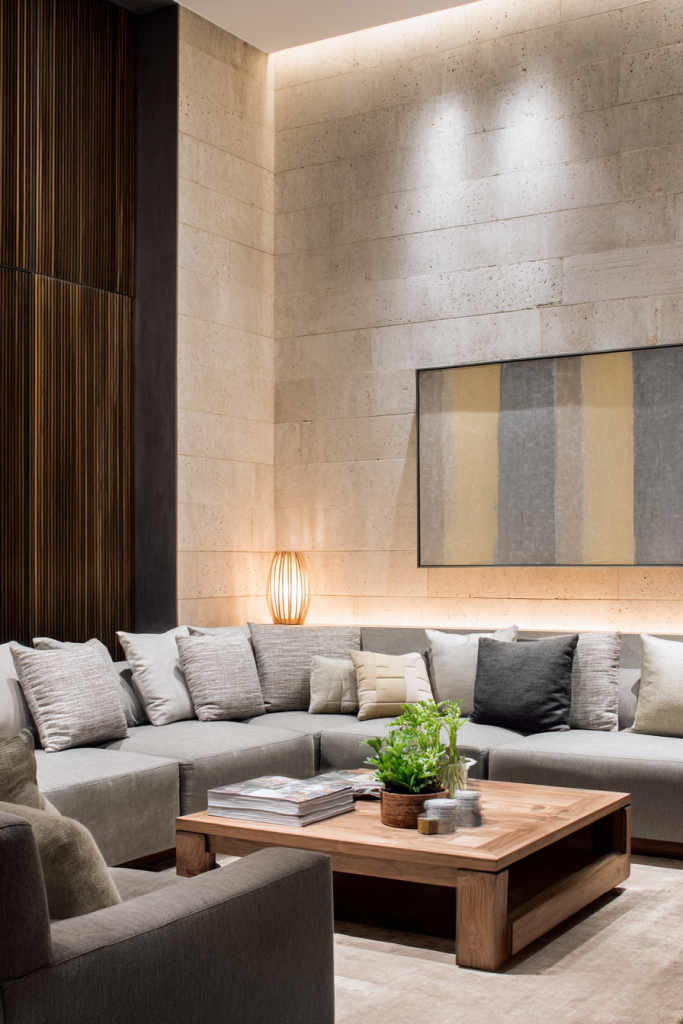
2. Bold Paint Color Statements
Transform Your Space with Strategic Color Choices
Sometimes the most impactful accent walls are the simplest ones. I’ve seen dramatic transformations achieved with nothing more than the right paint color applied to a single wall. The secret lies in choosing hues that complement your existing decor while adding personality and depth.
Deep jewel tones like emerald green, sapphire blue, or rich burgundy create sophisticated drama. For warmer atmospheres, consider terracotta, mustard yellow, or deep coral. Cool spaces benefit from charcoal gray, navy blue, or forest green. Always test colors in different lighting conditions—morning light reveals different undertones than evening illumination.
Designer tip: Use the 60-30-10 rule: neutral walls (60%), secondary color furniture (30%), and your bold accent wall color echoed in accessories (10%) for perfect balance.
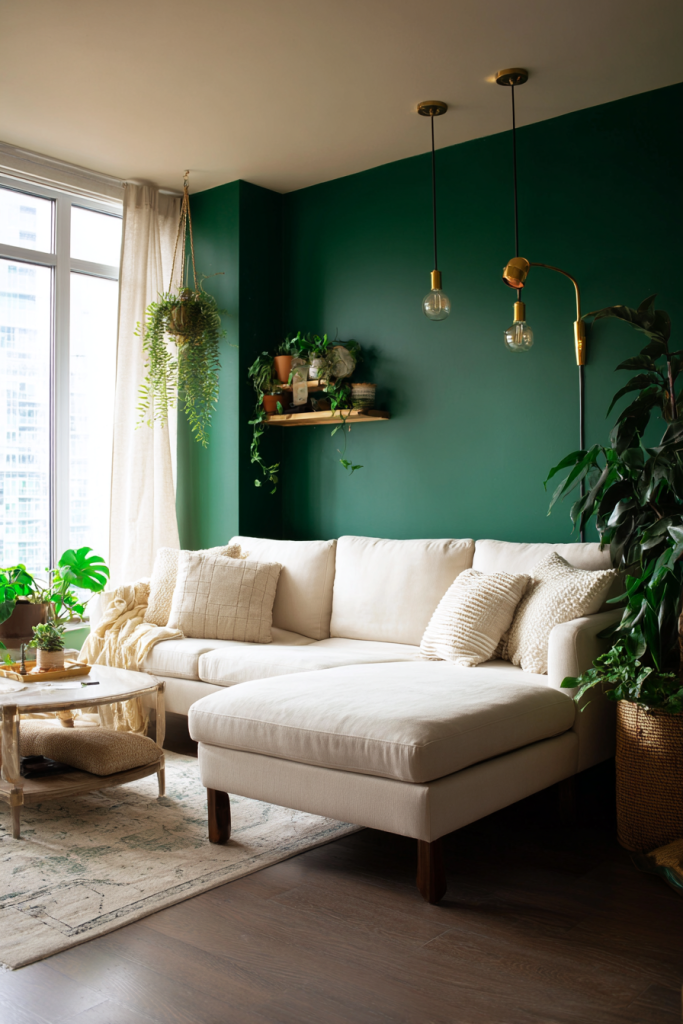
3. Textured Wood Paneling
Add Warmth with Natural Wood Elements
Wood paneling has evolved far beyond the dated styles of decades past. Today’s wood accent walls range from sleek horizontal planks to reclaimed barn wood, each bringing unique warmth and character. I particularly love how wood softens modern spaces while adding organic texture.
Shiplap remains popular for its clean lines and versatility—it works equally well painted white for farmhouse charm or stained dark for sophisticated drama. Reclaimed wood tells a story through its weathered patina and natural imperfections. For contemporary spaces, consider vertical wood slats with gaps that create interesting shadow patterns.
Designer tip: Mix wood tones thoughtfully—if your flooring is warm oak, choose cooler walnut tones for your accent wall to create visual interest without clashing.
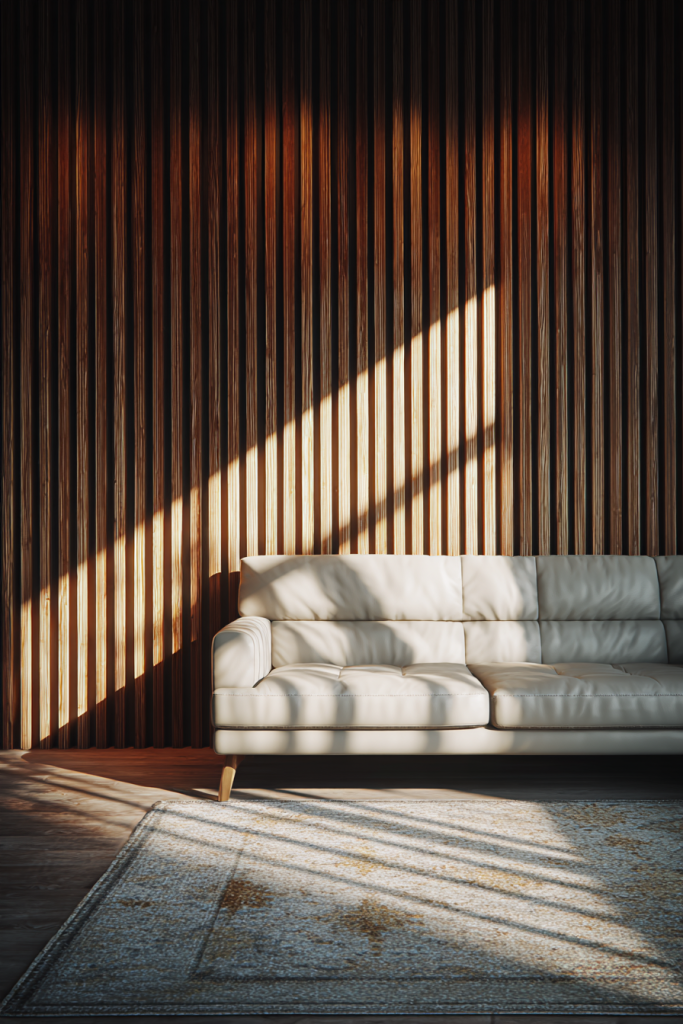
4. Gallery Wall Art Displays
Curate Your Personal Museum
Creating an accent wall dedicated to artwork transforms your living room into a personal gallery. I’ve helped clients display everything from family photographs to original paintings, and the key is thoughtful curation and strategic arrangement.
Start with pieces you love, then consider how they work together in terms of color, style, and scale. Mix different frame styles for eclectic charm, or use matching frames for cohesive elegance. The salon-style approach—covering most of the wall with varied-sized pieces—creates maximum impact in larger rooms.
Designer tip: Cut paper templates of your frames and arrange them on the wall with painter’s tape before hanging anything. This prevents unnecessary holes and ensures perfect placement.
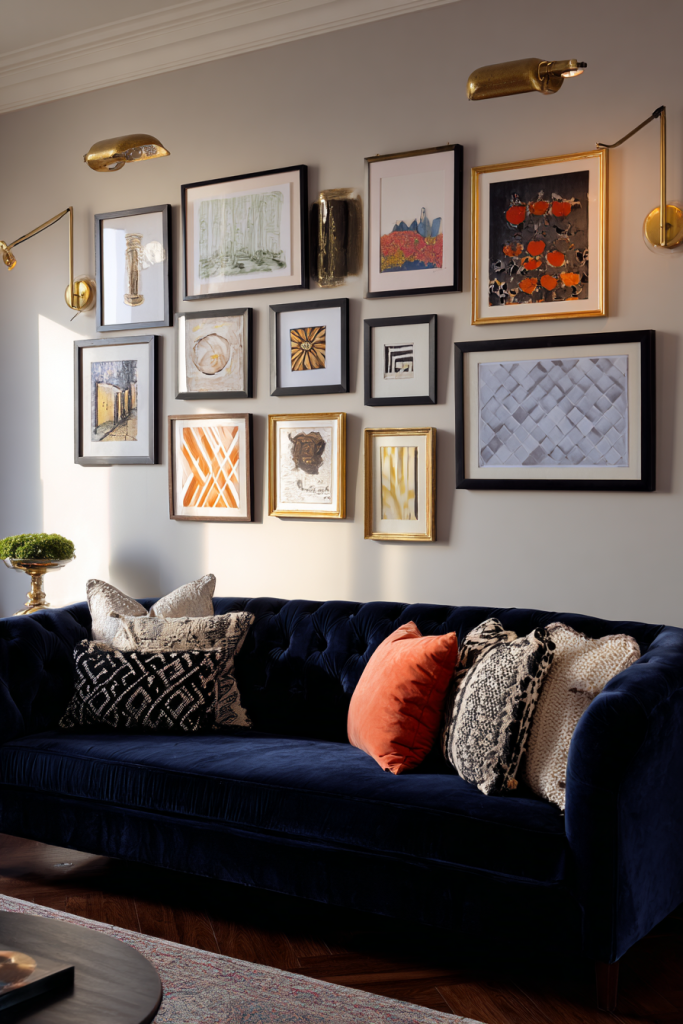
5. Built-in Shelving Systems
Combine Function with Visual Appeal
Built-in shelves transform an accent wall into both storage solution and design feature. I love how they create architectural interest while providing space for books, decor, and personal collections. The key is balancing function with aesthetics through thoughtful styling.
Design your shelving to complement your room’s proportions—floor-to-ceiling units work beautifully with high ceilings, while horizontal arrangements suit standard-height rooms. Mix open shelving with closed storage to hide clutter while displaying treasured items. Consider integrating lighting to highlight your displays and create ambiance.
Designer tip: Follow the rule of thirds when styling shelves—group items in odd numbers and vary heights to create visual rhythm and prevent monotony.
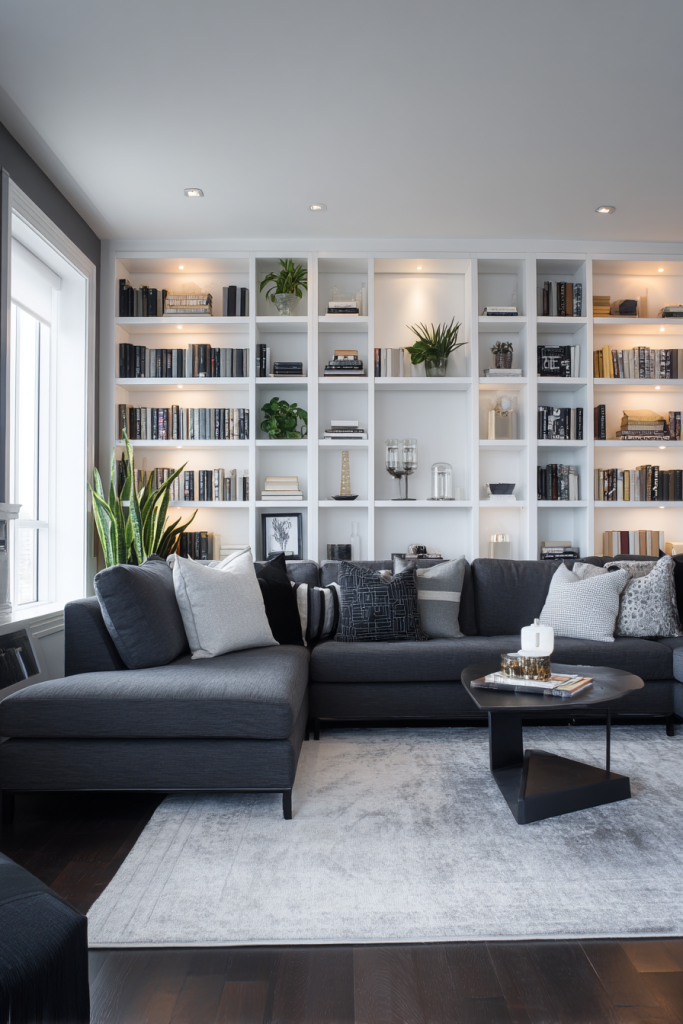
6. Wallpaper Feature Walls
Express Personality Through Pattern
Wallpaper offers unlimited possibilities for creating stunning accent walls. From subtle textures to bold patterns, wallpaper can establish mood, add color, and express personality in ways that paint alone cannot achieve. I’ve seen rooms completely transformed by choosing the perfect wallpaper design.
Geometric patterns work beautifully in modern spaces, while floral designs suit traditional or eclectic rooms. Textured wallpapers add subtle dimension without overwhelming smaller spaces. Metallic accents catch light beautifully and add glamour. Remember that accent walls allow you to use bolder patterns than you might choose for an entire room.
Designer tip: Choose wallpaper colors that appear elsewhere in your room through accessories, artwork, or furniture to create cohesion and prevent the accent wall from feeling disconnected.
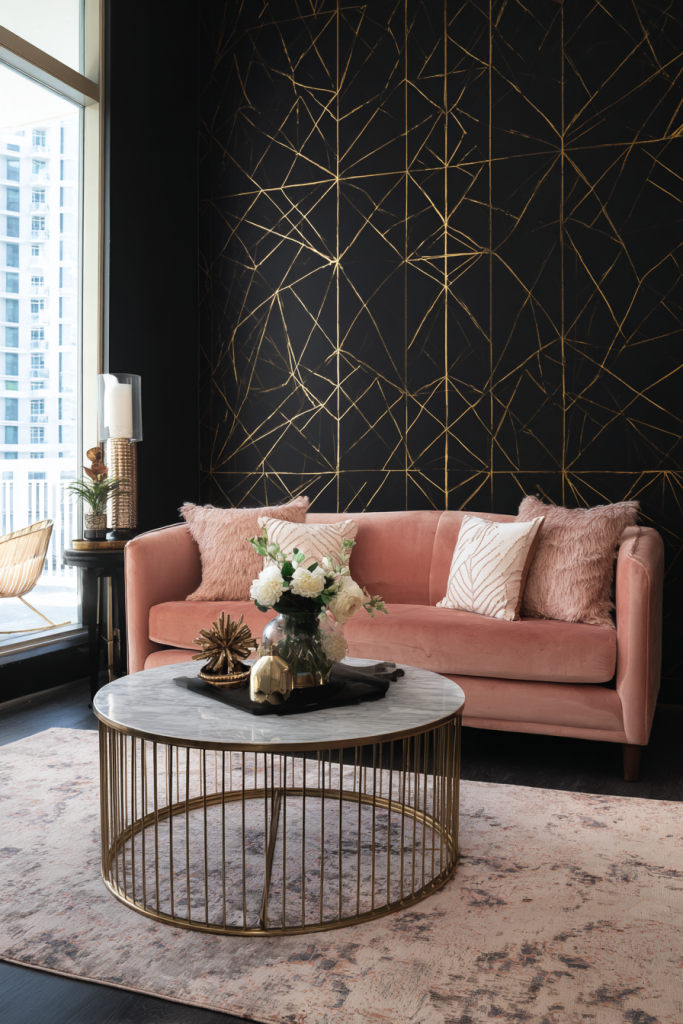
7. Fireplace Accent Walls
Create a Natural Focal Point
A fireplace naturally commands attention, making it perfect for accent wall treatment. Whether you have a traditional wood-burning fireplace or modern electric unit, the surrounding wall offers incredible design opportunities. I love how fireplace accent walls combine function with dramatic visual impact.
For traditional charm, surround your fireplace with natural stone or classic brick that extends from floor to ceiling. Modern fireplaces benefit from sleek tile, metal panels, or even concrete for industrial appeal. The key is choosing materials that complement your fireplace style while enhancing the overall room design.
Designer tip: Extend your fireplace materials beyond the immediate surround to create a full accent wall—this makes the fireplace feel more integrated and less like an afterthought.
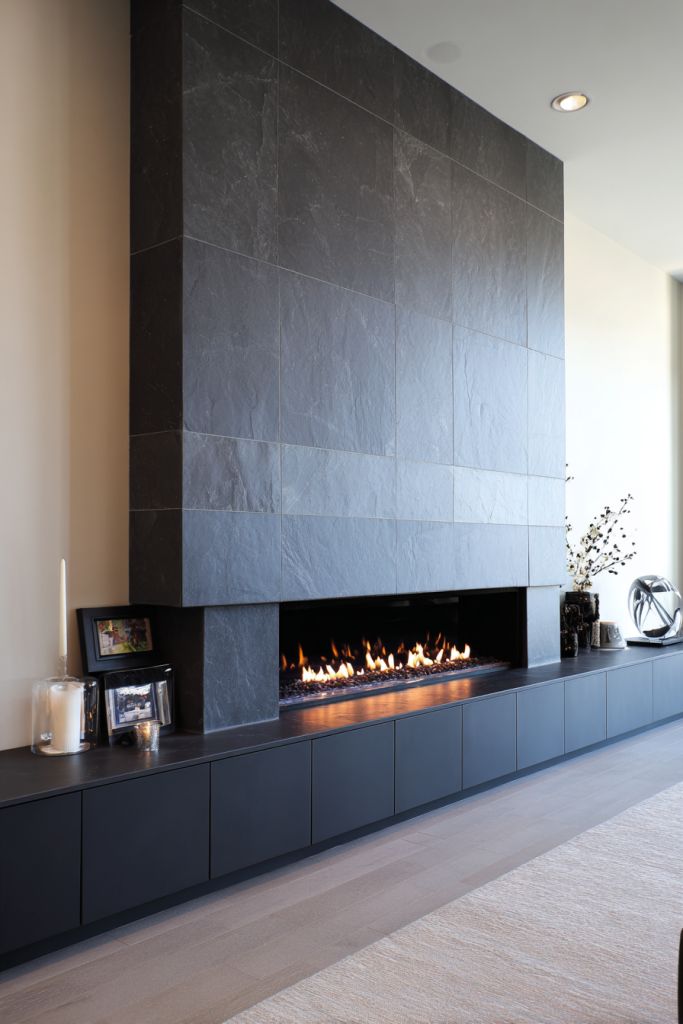
8. Three-Dimensional Wall Panels
Add Sculptural Interest with Modern Textures
Three-dimensional wall panels bring architectural interest to flat surfaces, creating depth and visual intrigue that changes throughout the day as light shifts. I’ve installed everything from geometric patterns to organic wave designs, and each transforms the room’s entire character.
Modern 3D panels come in various materials—from lightweight foam to sophisticated metal designs. Wave patterns create calming, organic flow, while geometric shapes add contemporary edge. These panels work particularly well behind seating areas where they create a sophisticated backdrop without overwhelming the space.
Designer tip: Use accent lighting to emphasize the three-dimensional aspects—uplighting or wall washing techniques create beautiful shadow play that enhances the sculptural quality.
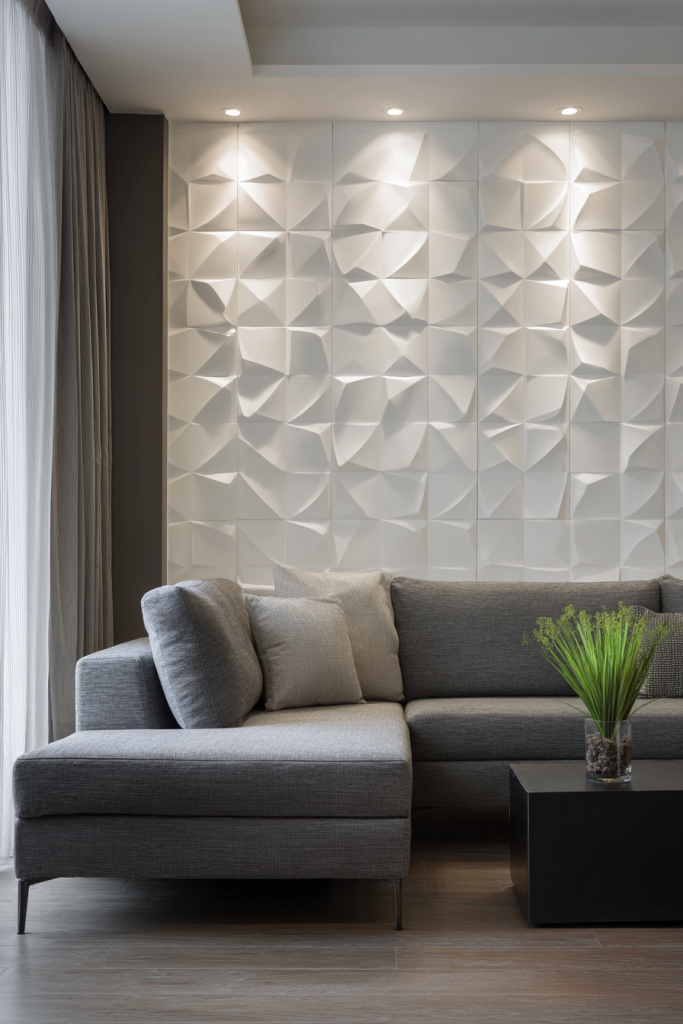
9. Brick Accent Walls
Embrace Industrial Charm with Classic Materials
Exposed brick brings instant character and warmth to any living room. Whether you’re working with original brick walls or installing new brick veneer, this material adds texture, color variation, and timeless appeal that complements both rustic and industrial design styles.
Original brick walls can be cleaned and sealed to preserve their authentic patina, while new brick allows you to choose specific colors and textures. Painted brick offers a fresh take—white paint creates Scandinavian charm, while dark colors add dramatic sophistication. Consider the room’s lighting when choosing treatments, as brick naturally absorbs light.
Designer tip: Balance brick’s heavy visual weight with lighter furniture and decor—cream or white upholstery, light wood tones, and metallic accents prevent the space from feeling too dense.
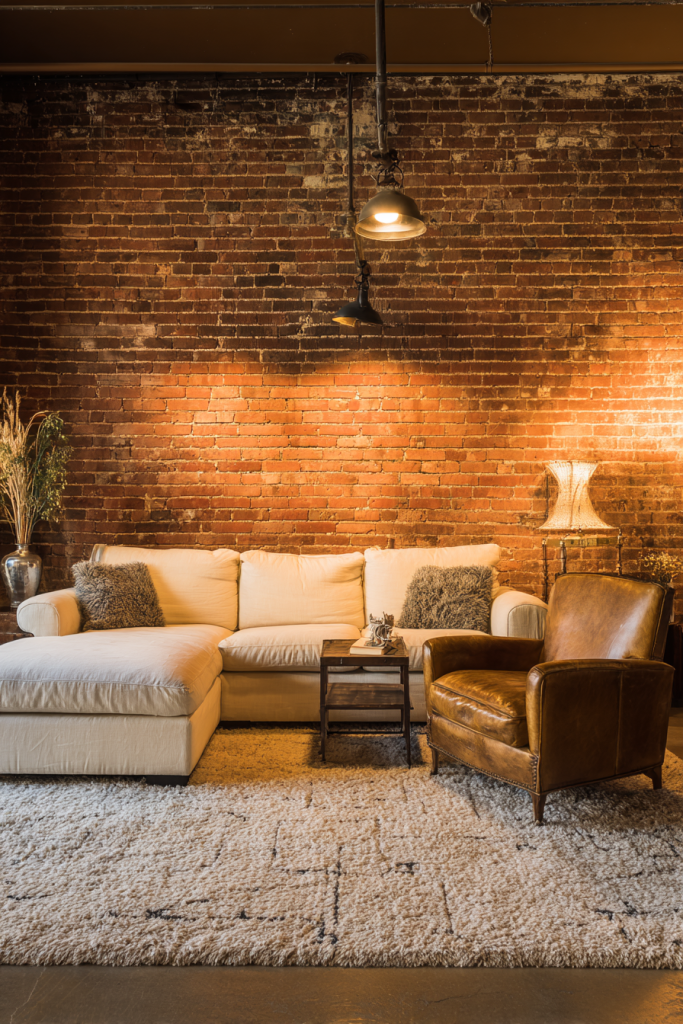
10. Fabric and Textile Walls
Introduce Softness with Upholstered Surfaces
Upholstered accent walls bring unexpected luxury and comfort to living rooms. I love using this technique behind seating areas where it provides both visual interest and practical comfort for leaning back. The soft texture absorbs sound, making rooms feel more intimate and cozy.
Choose fabrics that complement your existing color scheme and withstand occasional contact. Velvet creates rich luxury, linen offers casual elegance, and performance fabrics provide durability. Consider the wall’s function—high-traffic areas need more durable materials than purely decorative walls.
Designer tip: Use fabric walls strategically—they work beautifully behind sofas or beds but avoid high-moisture areas like near fireplaces or windows where condensation might occur.
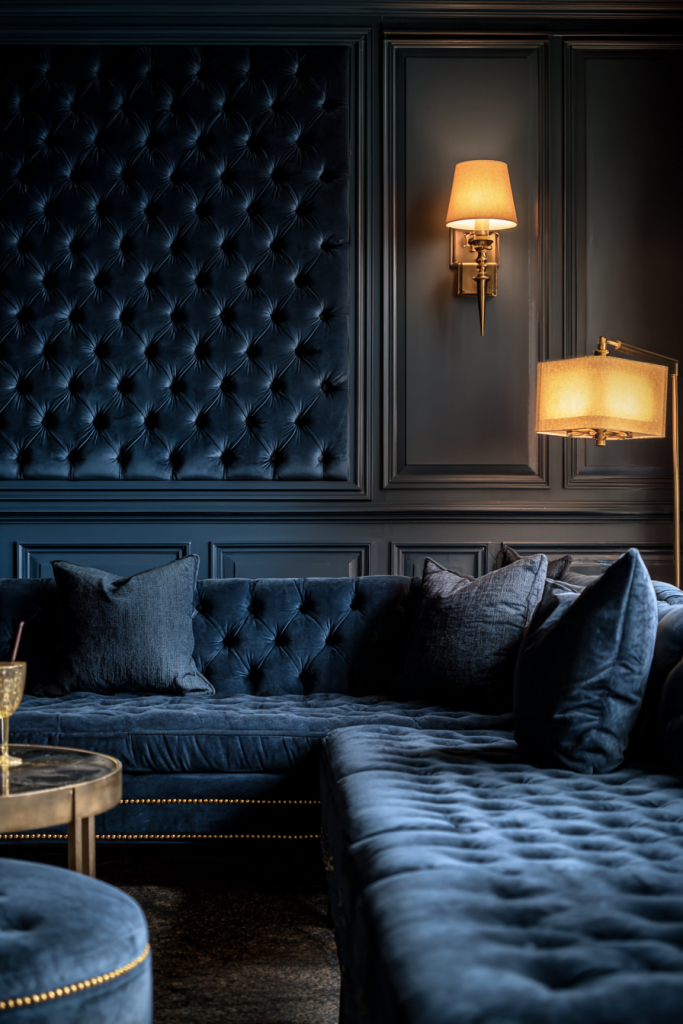
11. Mixed Media Combinations
Create Unique Statements with Layered Materials
Some of my most successful accent walls combine multiple materials and textures for truly unique results. Mixing wood with metal, stone with fabric, or paint with panels creates visual richness that single materials cannot achieve alone.
Start with a base material, then layer complementary elements. Wood panels with metal accents create modern industrial appeal. Stone combined with wood brings natural warmth. The key is maintaining balance—let one material dominate while using others as accents to avoid visual chaos.
Designer tip: Stick to a cohesive color palette when mixing materials—this ensures the combination feels intentional rather than random, even with varied textures and finishes.
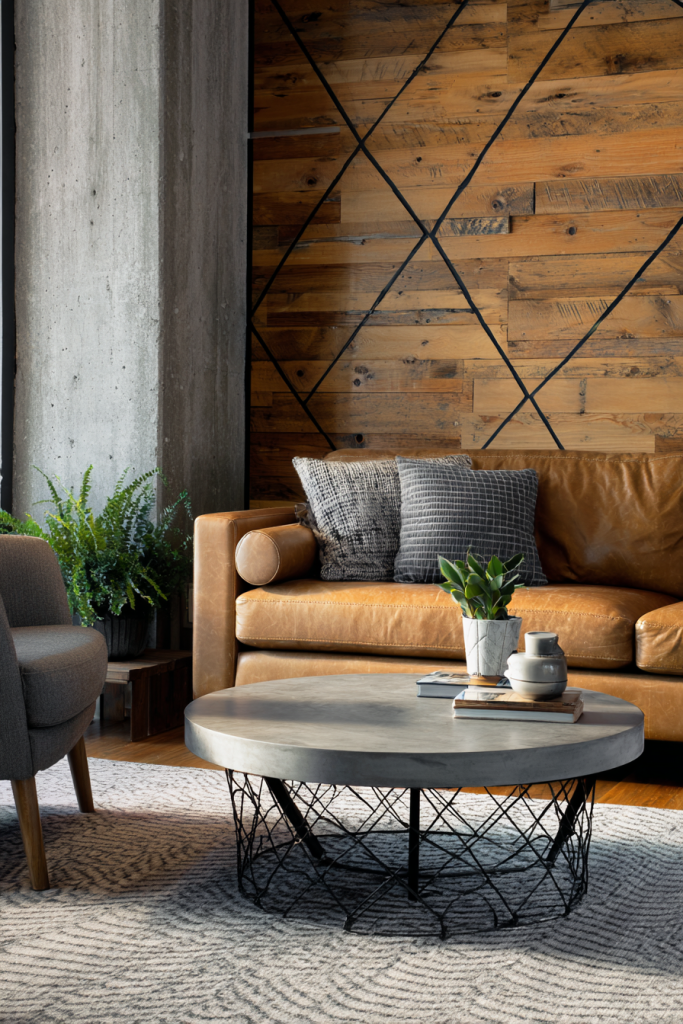
12. Mirror and Reflective Surfaces
Amplify Light and Space with Strategic Reflection
Mirrored accent walls offer unique benefits beyond visual appeal—they reflect light, create the illusion of space, and add glamorous sophistication. I particularly love using mirrors in smaller living rooms where they effectively double the visual space while maintaining elegance.
Consider different mirror treatments for varied effects. Large format mirrors create clean, modern impact, while multiple smaller mirrors in interesting arrangements add eclectic charm. Antiqued mirrors bring vintage elegance, and colored mirrors offer contemporary flair. Position mirrors to reflect attractive views or important lighting sources.
Designer tip: Be mindful of what your mirrors reflect—position them to capture beautiful views, artwork, or architectural features rather than cluttered areas or blank walls.
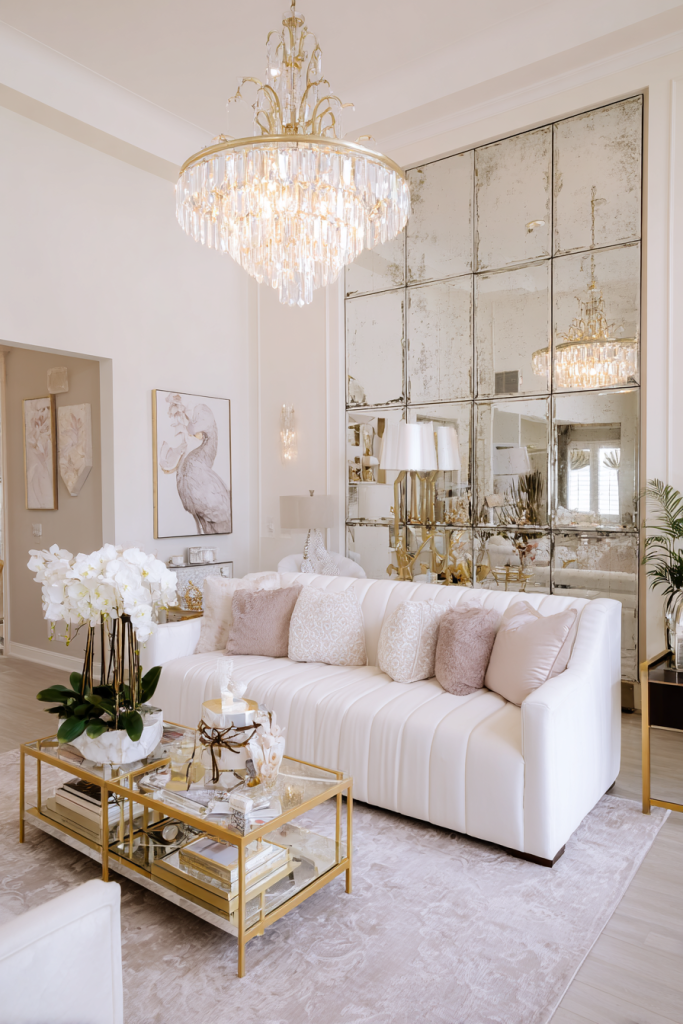
Conclusion
Creating the perfect accent wall transforms your living room from ordinary to extraordinary. These 12 approaches offer something for every style preference, budget, and skill level. Whether you choose the timeless elegance of natural stone, the bold impact of paint, or the sophisticated luxury of upholstered walls, the key is selecting an option that truly reflects your personality and enhances your daily living experience.
Remember that the best accent walls feel intentional and integrated, not like afterthoughts. Consider your room’s existing architecture, lighting, and color scheme when making your selection. Don’t be afraid to start with something simple—even a bold paint color can dramatically transform your space and serve as the foundation for future design evolution.
The beauty of accent walls lies in their flexibility. As your style evolves, many of these treatments can be updated, modified, or completely changed without major renovation. This makes them perfect for homeowners who love refreshing their spaces while maintaining practical budgets.
Take time to plan your accent wall carefully, considering both immediate impact and long-term satisfaction. The right choice will enhance your living room’s beauty, functionality, and value for years to come.
Frequently Asked Questions
How much does it typically cost to create an accent wall?
Accent wall costs vary dramatically based on materials and complexity. Paint accent walls cost $50-200 for DIY projects, while natural stone or custom built-ins can range from $2,000-8,000. Wallpaper falls in the middle at $300-800, and wood paneling typically runs $500-2,500. Consider both materials and installation when budgeting.
Which wall should I choose as my accent wall?
The best accent wall is typically the one that naturally draws attention when entering the room. This is often the wall behind your main seating area, the wall featuring your fireplace, or the wall opposite the room’s entrance. Avoid walls with multiple windows, doors, or architectural interruptions that might fragment the design.
Can accent walls work in small living rooms?
Absolutely! Accent walls can actually make small rooms feel larger when executed properly. Light colors and reflective materials like mirrors expand visual space, while vertical elements like wood paneling or tall artwork draw the eye upward, creating height illusion. Avoid overwhelmingly bold patterns in very small spaces.
How do I coordinate my accent wall with existing furniture?
Start by identifying your room’s existing color palette and choose accent wall treatments that complement rather than compete. If you have bold furniture, opt for subtle wall treatments. If your furniture is neutral, your accent wall can be more dramatic. Echo accent wall colors in small accessories like pillows, throws, or artwork for cohesion.

